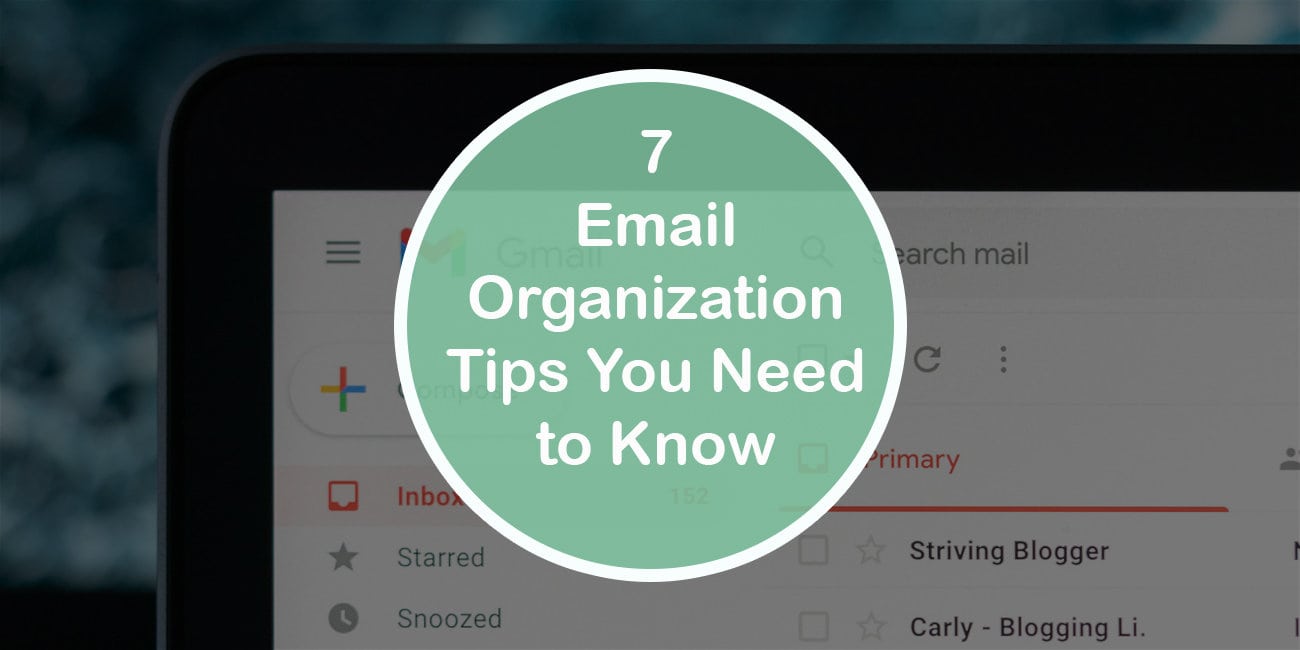For small business owners, sending emails can sometimes cause more distress than excitement. It is challenging to know whether our emails are being read by our intended audience, untapped potential customers, or customers who have already purchased.
What works for one business may not work for another, so there’s no ironclad rule regarding how to use our emails as a marketing strategy.
We can use email organization tips to ensure our emails are effective. In this article, we’ll look at some tips you can implement daily as a small business owner.

-
Create a System and Stick With It
Developing a system and sticking with it is essential for email organization. It can be easy to neglect emails and put off replying too long. Additionally, it is necessary to keep crucial emails separate from unimportant ones.
Try to respond to emails as soon as their contents are relevant; if needed, politely excuse yourself for not replying promptly. Also, please keep track of any emails that require replies; additionally, it can be helpful to set reminders for yourself.
-
Use Labels and Folders to Your Advantage
Using labels and folders to your advantage is one of the most critical email organization tips you need to know. Tags will allow you to easily differentiate your inbox by categorizing your emails. You can use them to organize emails by topic, project, recipient, or priority level.
You can use folders to store and organize emails by a specific label. It will enable you to search your inbox to find what you need quickly. If you know who the email is from or the subject line, you can easily remember the folder where you place your email.
Organizing and sorting emails with labels and folders will benefit you in the long term as you won’t need to scroll through your backlog of emails to find what you need. It’s a great way of staying on top of your responsibilities.
-
Create a Rule for Emails
Establishing rules for yourself can help you manage the flood of emails. To start, set up folders for emails that require action, the information you need to keep track of, items that need to be remembered later, and those that are irrelevant and can be discarded.
Set up a system to process each email as it comes in. Respond to emails immediately and move them to the correct folder. Finally, unsubscribe to irrelevant emails to reduce clutter.
-
Use Email Templates for Recurring Messages
An email template is a pre-defined text that you keep in a library of frequently used phrases to reuse with minimal modifications when sending emails quickly. It reduces the need for creating and typing out recurring messages from scratch. Furthermore, email templates and keyword searches streamline the process of rapidly finding information within the body of emails.
By setting up a library of email templates for your team, you can reduce the time spent crafting and writing emails, create greater consistency in the user experience, and save time when responding to customer inquiries. In the long run, these tactics will help to organize better and have proper inbox management.
-
Leverage Automated Tools for Maximum Efficiency
Leveraging automated tools can help you maximize efficiency and ensure nothing falls through the cracks. You can set up automatic notifications to alert you for emails connected to specific topics. You can also set up auto-responses for the emails you receive, allowing you to address concerns without typing out lengthy replies.
These automated tools can also enable you to group emails by subject or sender, making it easier to manage them. You can also create a smart folder to categorize your emails as they come in automatically. Taking advantage of automated tools can drastically reduce your time managing emails and free up more time to focus on critical tasks.

-
Knowing When to Delete Unnecessary Emails
Knowing when to delete unnecessary emails is an integral part of email organization. Proper email organization can create a clutter-free mailbox, make locating and responding to emails easier, and reduce the storage needed.
To do this, first establish an email retention policy. It outlines the period and parameters for deleting emails and what qualifies as necessary emails to be saved. Keep and store essential emails such as contracts and customer orders.
Additionally, maintain a uniform filing system and establish folders and naming conventions according to what makes sense for your organization. It can range from subject and date-specific labels to client-specific folders.
Finally, follow your policy and be consistent in deleting your emails. Keeping your mailbox tidy can go a long way in helping you maintain organization, save time, and prevent essential emails from being lost.
-
Developing Achievable Prioritization Strategies for Your Inbox
Developing achievable prioritization strategies for your inbox can help with email organization. Begin by removing all distractions. Have two separate email accounts: one for personal and one for professional.
For personal emails, unsubscribe from the newsletter or other emails seen as clutter. Manage time by setting deadlines for replying to emails. Set up folders in your email for different subjects and use labels for more straightforward navigation.
Change your email notification settings so that you are notified only of essential emails, not every single email. Find out who sends you the most emails and decide how often to check your email. Set aside specific times in the day to focus solely on emails and create particular tasks to tackle.
Turn off any email notifications on your phone. Focusing on a few critical emails is vital to staying organized and keeping up with your inbox organization.
Follow These Organization Tips to Have a More Productive Day
Organizing your emails can make all the difference in saving valuable time and energy. You can easily manage your emails using labels, folders, and search options. Remember to create filters and set up rules to streamline the process.
Try using these email organization tips to maximize your workflow today!
Check out our other blog posts for more health and lifestyle tips.

